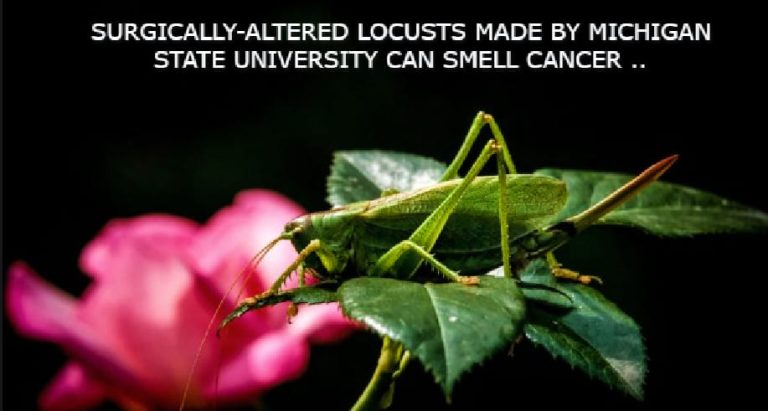Surgically-altered locusts are hitting the headlines currently. Human beings using other creatures for their benefit is a very common phenomenon that has been repeatedly practiced for centuries. From using horses for riding to cattle for farming, from using cows for developing the dairy industry to using wild animals for their entertainment in zoos and circuses, human beings have been seen putting the other creatures in numerous works. Moreover, scientists using them in experiments for the sake of the development of science is another story. Recently in the Covid-19 pandemic, scientists tried to train dogs to detect COVID-19 infections in humans. The results were predictable.
What are Surgically-altered locusts?
But science doesn’t stop there. A team of researchers from Michigan State University are working on cyborg locusts that can smell cancer. According to a report by Engadget, “In a recent study published in the journal bioRXiv, they detailed a locust-based cancer screening system. Per MIT Technology Review, the tech involves surgically-altered locusts with electrodes implanted into the lobes of their brains by Professor Debajit Saha and his colleagues. Those electrodes were there to capture signals from each insect’s antennae, which they use to sense smells.”
How does it work?
The team of researchers made three different types of the cancerous human mouths and a separate set of healthy ones. Added to that they built a device that can capture the gases emitted by those tissues. Now they gave the insects a whiff of the gases. They found that the locusts’ brains responded to each type of tissue differently and that they could correctly identify sick cells with only the recording of the gasses.
The study is yet to be peer-reviewed and get approval from the Food and Drug Administration. “The insect is dead in terms of its body function,” Saha told MIT Technology Review. “We are just keeping its brain alive.”
Saha and his team are planning to continue their work. They need 6-10 locust brains to function.
Read our latest Issue: 10 Smartest Companies to Watch 2022






